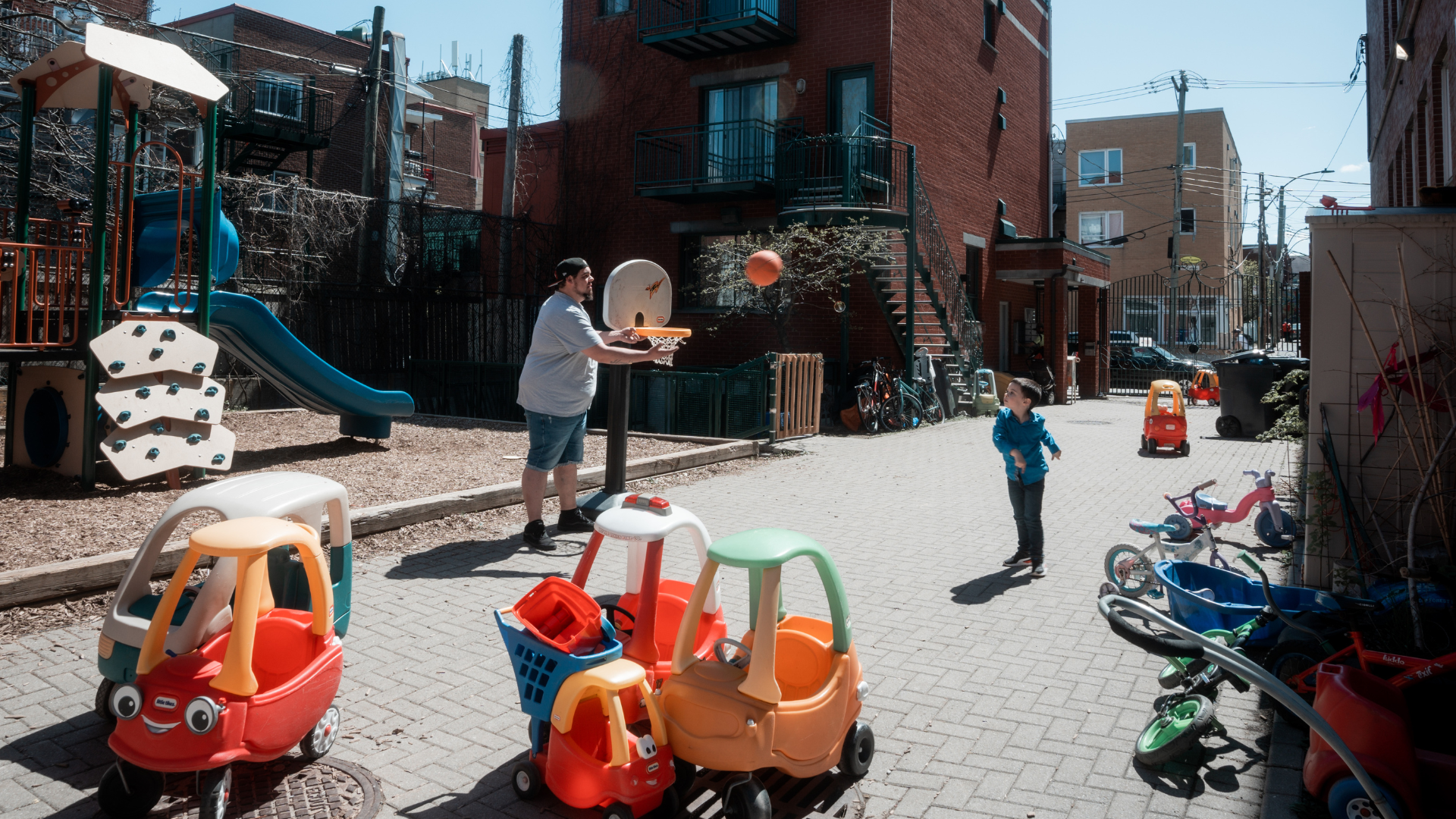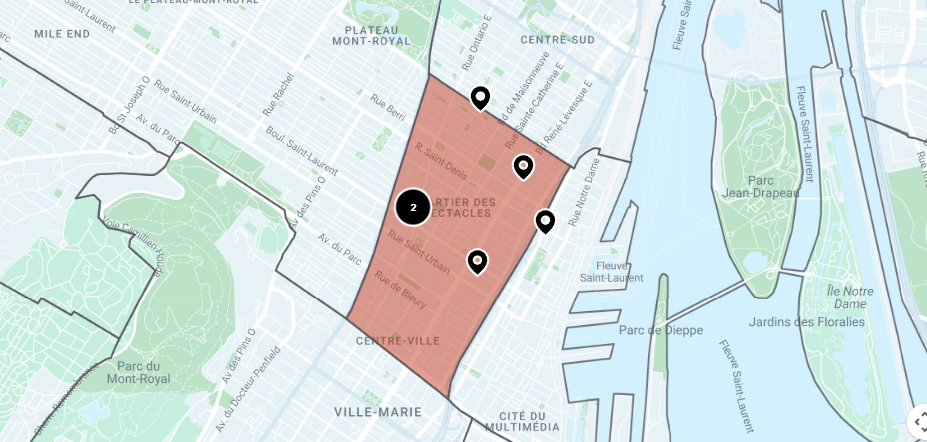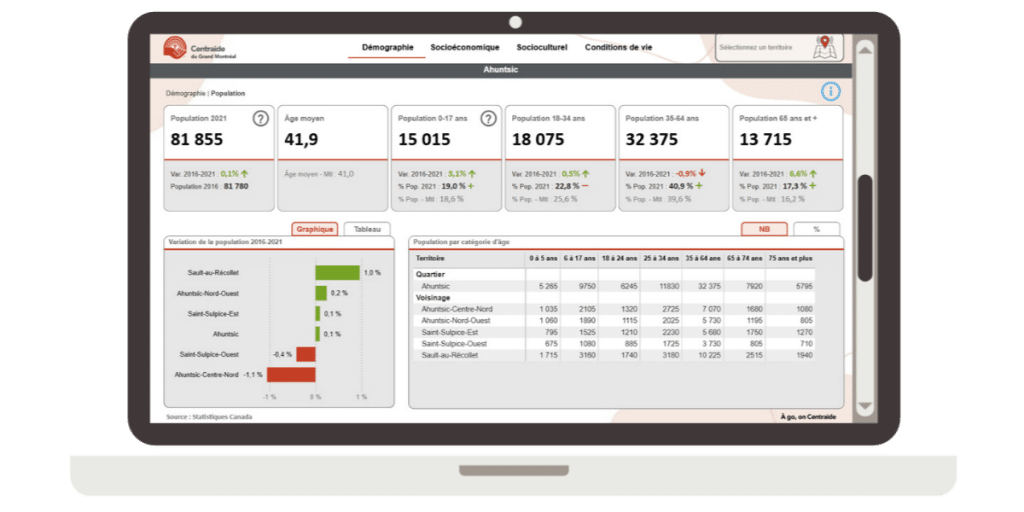
Faubourg Saint-Laurent
Snapshot of
Faubourg Saint-Laurent

Discover key facts
👩🦰 Population – rapid growth and young adults
Between 2016 and 2021, the neighborhood experienced one of the fastest population growths on the Island of Montreal, nearly ten times higher than the city average (29% vs. 3%). Young adults aged 18 to 34, often students, make up nearly half of the residents (45%).
👴 People living alone – highest proportion in the Centraide territory
The rate of people living alone is the highest among Montreal neighborhoods (37% vs. 19% in Montreal). This trend is particularly pronounced among seniors, more than half (55%) of whom live alone.
📍 Poverty – second highest rate in the Centraide territory
The neighborhood is home to 3,850 low-income residents, representing 21% of the population, almost double the Montreal average (11%). All age groups are more affected than the city average (0–17, 18–64, and 65+). Families, although small in number, are particularly vulnerable, especially single-parent families, which have one of the highest low-income rates in the Centraide of Greater Montreal area.
👨🏾🤝👨🏼 Diversity – rapidly growing
Nearly half of the population (46% or 8,670 people) belong to a visible minority group, a rate above the Montreal average (33%). Between 2016 and 2021, the neighborhood saw a significant increase in its visible minority population (+ 51%).
🏢 Housing – high rents and strong financial pressure
In the Ville-Marie borough, which includes Faubourg Saint-Laurent, the average rent for a two-bedroom apartment is among the highest in Montreal ($1,884 in 2024). The proportion of renter households spending too much of their income on housing is well above the Montreal average (40% vs. 28%).

Dashboard
Consult this dashboard to access a wide range of demographic, socio-cultural/economic, and living-condition data.



